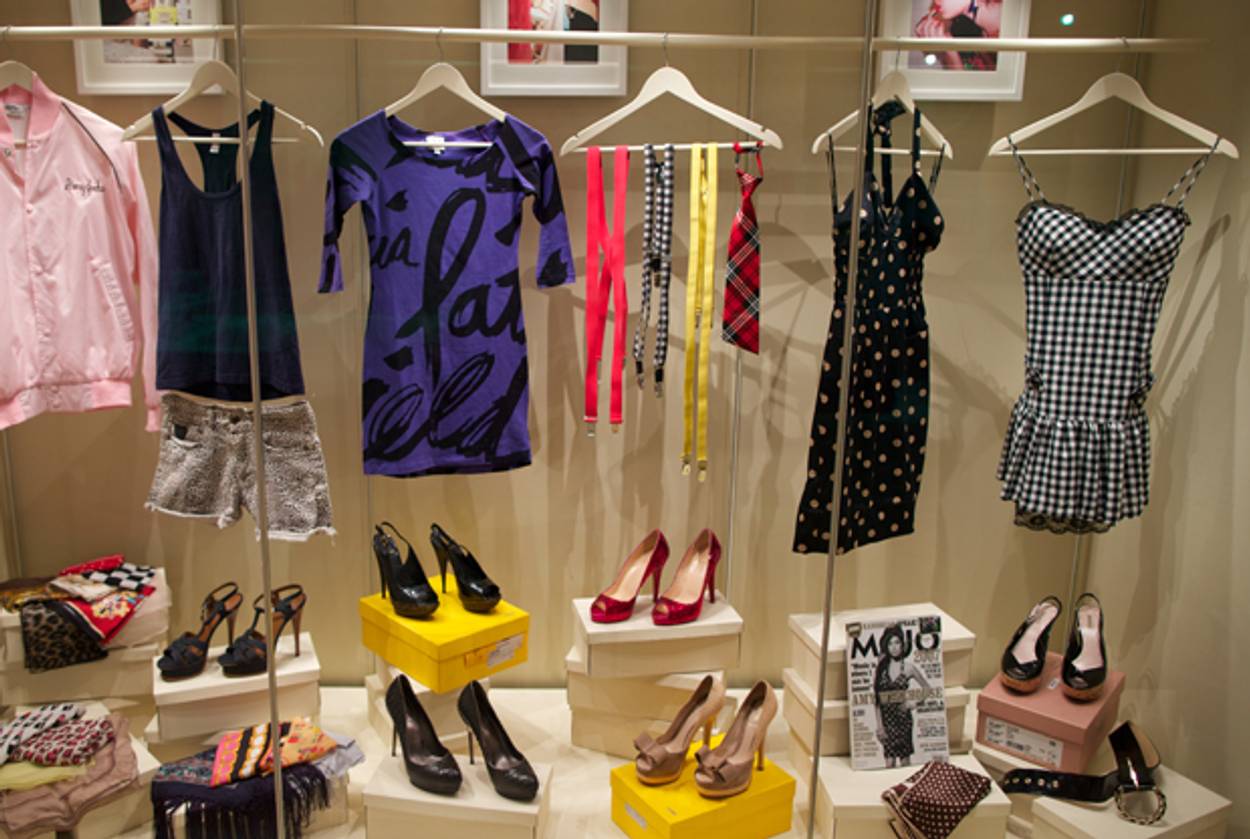Curating Amy Winehouse’s Private Life
Exhibit at London’s Jewish Museum offers an intimate look at the late singer




After her 2006 LP Back to Black blew up, going eight times platinum in the U.K. and winning her multiple Grammys, Amy Winehouse’s music became ubiquitous. Songs like “Rehab,” “You Know I’m Not Good,” and “Tears Dry On Their Own,” which spoke to dark, personal themes of alcohol abuse and depression, were spun multiple times daily on mainstream commercial radio stations. Her unique sound was, for years, an inescapable part of British popular culture.
With the commercial success, Winehouse acquired a public image, one which was both inseparable from and often larger than the problems spilled out all over Back to Black. She frequently appeared in a state of substance-induced catatonia—glazed, incoherent, and erratic. Concerts and tours were abandoned, comebacks begun then aborted as she struggled with dependence. Her tempestuous relationship and marriage with Blake Fielder-Civil was fodder for the red tops and the gossip mags.
Yet as London’s Jewish Museum’s new exhibit, Amy Winehouse: A Family Portrait, demonstrates, there was much about her the public did not know—or didn’t care to know. It exposes her roots and provides a window into her family life. It’s “a snapshot of a girl who was, to her deepest core, simply a little Jewish kid from North London with a big talent who, more than anything, just wanted to be true to her heritage,” writes her brother, Alex, in his introduction to the exhibit, which he curated.
The Winehouse family’s heritage in London is traced back to 1890, when patriarch Harris Winehouse arrived in London from Minsk, to be followed by the rest of his family. “He came to London by mistake—he was supposed to be going to New York—but now the thought of us being from anywhere else seems slightly ridiculous.”
His son Ben owned a barbershop in the working-class East End, above which the family lived for fifty years, and his grandson and great-grandson drove hackney carriages. And so did his great-great-grandson, almost. His great-great-granddaughter was Amy.
The exhibit contains traces of the family’s Jewishness. It speaks to their continued attachment to the East End where some of their relatives still live, even though Amy born raised in Southgate, in north London. There’s a photograph of Amy at fifteen wearing her uniform of the Jewish Lads’ and Girls’ Brigade, and one of her brother Alex at his bar mitzvah with parents Mitch and Janis.
Touchingly, there’s a copy of Claudia Roden’s The Book of Jewish Food, which Alex gave Amy for one of her birthdays because she “wanted to learn how to make chicken soup,” although she never did. At least not well, anyway.
Amy Winehouse: A Family Portrait also attempts to convey that, in spite of her early rebelliousness of the sort that got her removed from drama school, Winehouse was above all someone who loved music, was aware of herself and her gifts, and yet revelled in her rise. On display are some of her favorite records by Aretha Franklin and Ray Charles, Frank Sinatra, Tony Bennett, and Carole King. When she was starting out, she kept all the backstage passes and wristbands she received when performing at festivals.
This young woman is almost unrecognizable from the star we saw after Back to Black. The Jewish Museum’s depiction of Amy Winehouse is of someone who was relatively untroubled and almost angelic, if a little cheeky, and yet her demons were scarred into her lyrics and intrinsic to her persona and her decline.
The exhibit, then, leaves a space to question where the one ends and the other begins—how does a “little Jewish kid from North London with a big talent” become a woman with a big talent but with drug problems, a messy personal life, and a career and a life which ended before it could fully blossom? Amy Winehouse: A Family Portrait does not wish to ask this—perhaps that is not its purpose. It might be a little more honest and earnest, though, if it tried.
Amy Winehouse: A Family Portrait runs at the Jewish Museum London until September 15.
Related: Amy Winehouse Exhibit Opening at the Jewish Museum in London [Jewcy]
A Hot Mess [Tablet]
Liam Hoare is a freelance writer based in Vienna, where he is the Europe Editor for Moment and a frequent contributor to Tablet.